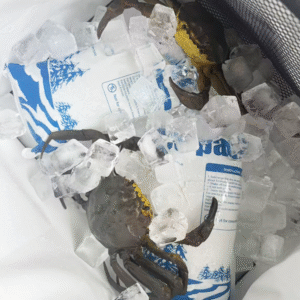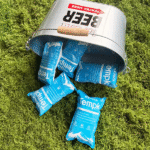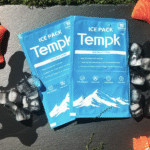Combien de temps dure la glace sèche dans un sac? 2025 Guide pour la logistique de la chaîne du froid
Si vous êtes impliqué dans l’expédition de marchandises sensibles à la température, Il est crucial de comprendre combien de temps la glace sèche se conserve dans un sac.. La durée de l’effet rafraîchissant de la glace carbonique dépend de divers facteurs, y compris la qualité de l'isolation, le type de neige carbonique, et les conditions environnementales. Ce guide fournira une compréhension approfondie de ces facteurs, ainsi que des conseils pour optimiser l'utilisation de la glace carbonique pour un refroidissement plus durable, vous aidant à planifier vos expéditions plus efficacement.
-
Combien de temps dure la glace carbonique dans un sac Pendant l'expédition?
-
Quels facteurs influencent la durée de vie de la neige carbonique dans un sac?
-
Comment optimiser l'utilisation de la neige carbonique pour des durées de refroidissement plus longues?
-
Quelles sont les meilleures pratiques pour stocker et transporter de la neige carbonique?
Combien de temps dure la glace sèche dans un sac?
La glace carbonique dans un sac dure généralement entre 18 à 48 heures, en fonction de plusieurs facteurs clés. Contrairement à la glace ordinaire, qui se transforme en eau, la neige carbonique se sublime directement en dioxyde de carbone. Sa durée dans un sac est influencée par la qualité de l'isolation, la quantité de neige carbonique, Et la température ambiante.
-
Qualité de l'isolation: Les sacs avec une meilleure isolation ralentiront le processus de sublimation, aider la glace carbonique à durer plus longtemps. Sacs de haute qualité fabriqués avec des matériaux multicouches, tels que des panneaux en mousse ou isolés sous vide, sont très efficaces.
-
Quantité de glace sèche: Plus vous utilisez de glace sèche, Plus il durera longtemps. Une quantité plus élevée offre une plus grande capacité de refroidissement, lui permettant de rester efficace pendant une durée plus longue.
-
Facteurs environnementaux: La température à laquelle la neige carbonique est stockée et transportée joue un rôle important. Les températures chaudes entraîneront une sublimation plus rapide de la neige carbonique, réduisant sa durée de refroidissement.
Facteurs qui influencent la durée de la glace carbonique dans un sac
| Facteur | Influence sur la longévité de la glace carbonique | Explication |
|---|---|---|
| Qualité de l'isolation | Haut | Une bonne isolation réduit les infiltrations de chaleur, ralentir la sublimation. |
| Température ambiante | Faible | Des températures plus chaudes accélèrent la sublimation. |
| Quantité de glace sèche | Haut | De plus grandes quantités de glace sèche durent plus longtemps. |
| Joint de sac | Haut | Un sac bien fermé minimise les infiltrations de chaleur, préserver la glace carbonique. |
Comment optimiser la durée de vie de la neige carbonique dans un sac?
Pour tirer le meilleur parti de votre glace carbonique, suivez ces bonnes pratiques pour prolonger sa durée de refroidissement:
-
Utilisez une isolation de haute qualité: Investissez dans des sacs isothermes de haute qualité avec de la mousse épaisse ou des panneaux isolés sous vide. L'isolation multicouche peut augmenter considérablement le temps de refroidissement, spécialement pour les expéditions longue distance.
-
Conservez le sac dans un endroit frais: Avant utilisation, stockez la neige carbonique dans un endroit ombragé ou climatisé pour réduire le taux de sublimation.
-
Limiter l'exposition à la chaleur: Gardez la neige carbonique à l'écart des sources de chaleur telles que la lumière du soleil ou le contact direct avec des surfaces chaudes.
-
Surveiller les niveaux de glace sèche: Vérifiez régulièrement la glace carbonique restante, Et si nécessaire, ajoutez-en plus pour prolonger le temps de refroidissement.
Par exemple, un envoi contenant 2 kg de neige carbonique dans un sac bien isolé a duré 24 heures maintenir une température de -20°C, alors que la même quantité dans un sac mal isolé ne durait que 15 heures.
Quels facteurs affectent la durée de vie de la neige carbonique dans un sac?
Plusieurs facteurs clés influencent la longévité de la neige carbonique:
-
Qualité d'isolation et longévité de la glace carbonique:
Une isolation de haute qualité aide à réduire la vitesse à laquelle la neige carbonique se sublime. Des matériaux comme polystyrène élargi (PSE), mousse, et feuille de réflexion créer une barrière contre la chaleur extérieure, ralentir la sublimation. En moyenne, des sacs bien isolés peuvent prolonger la durée de vie de la glace carbonique de 18 à 24 heures. -
Température ambiante:
La température ambiante affecte considérablement le taux de sublimation. La neige carbonique par temps chaud se sublimera beaucoup plus rapidement que par temps plus froid. Pendant les mois d'été, une isolation supplémentaire ou des blocs de glace peuvent aider à protéger la neige carbonique de la chaleur.
Meilleures pratiques pour le stockage et le transport de glace carbonique dans un sac
Pour assurer des performances optimales, suivez ces bonnes pratiques pour le stockage et le transport de la glace carbonique:
-
Utilisez une isolation appropriée: Choisissez toujours la qualité, sacs isothermes multicouches pour un refroidissement plus durable.
-
Conservez la glace carbonique dans un endroit frais, Endroit sec: Gardez la glace carbonique à l’abri de la lumière directe du soleil ou des sources de chaleur pour ralentir la sublimation.
-
Assurer une bonne ventilation: La glace sèche sublimait le dioxyde de carbone, il est donc crucial de permettre une bonne libération des gaz. Un sac scellé sans ventilation peut augmenter la pression et éventuellement éclater.
Comment optimiser l'utilisation de la glace carbonique pour des durées de refroidissement plus longues?
Voici quelques conseils pour maximiser la durée de vie de la neige carbonique pendant le transport:
-
Surveiller la température pendant le transport: Si faisable, Utiliser un enregistreur de température pour suivre l'état de la neige carbonique pendant le transport, s'assurer qu'il reste dans la plage de température requise.
-
Utilisez des blocs de glace sec au lieu des pastilles: Les blocs de glace carbonique se subliment plus lentement en raison de leur masse plus importante et de leur surface réduite. Si vous avez besoin d'un refroidissement durable, les blocs sont un meilleur choix que les pellets.
-
Augmentez la quantité de glace carbonique: Si la durée d'expédition est plus longue, augmenter la quantité de neige carbonique aidera à prolonger son temps de refroidissement.
2025 Tendances en matière d’utilisation de glace carbonique pour la logistique de la chaîne du froid
L'utilisation de glace carbonique dans la logistique de la chaîne du froid continue d'évoluer avec les nouvelles technologies et les nouveaux matériaux d'emballage.. Dans 2025, solutions d'emballage intelligentes, y compris Systèmes de surveillance IoT, facilitent le suivi de l'état de la neige carbonique tout au long du transport. Les entreprises explorent également alternatives durables à la glace sèche, en utilisant Co₂ recyclé pour minimiser l'impact environnemental tout en maintenant un refroidissement efficace.
Tendances émergentes dans le domaine du conditionnement de glace sèche et de la logistique:
-
Capteurs intelligents et surveillance: Le suivi en temps réel de la température et des niveaux de CO₂ permet une meilleure prise de décision et des optimisations pendant le transport.
-
Alternatives écologiques à la glace carbonique: Les entreprises recherchent des moyens de réduire l'empreinte carbone de la neige carbonique tout en conservant ses propriétés réfrigérantes..
-
Matériaux d'isolation avancée: Le développement de nouveaux, des matériaux d'isolation plus efficaces augmentent la longévité de la glace carbonique et contribuent à réduire l'impact environnemental de la chaîne du froid.
Questions fréquemment posées
Q1: Combien de temps dure la glace carbonique dans un sac?
La glace carbonique dans un sac bien isolé dure entre 18 et 24 heures, en fonction de la quantité de neige carbonique utilisée, la qualité de l'isolation, Et la température ambiante.
Q2: Puis-je conserver de la neige carbonique dans un sac en plastique?
Non, sceller de la neige carbonique dans un sac en plastique est dangereux car la sublimation du gaz CO₂ peut faire éclater le sac.. Utilisez toujours des sacs ventilés ou des doublures respirantes pour un transport en toute sécurité.
Conclusion et recommandations
En conclusion, la durée de vie de la neige carbonique dans un sac est influencée par plusieurs facteurs clés, notamment la qualité de l'isolation, température ambiante, et la quantité de glace sèche utilisée. En suivant les meilleures pratiques telles que l'utilisation de sacs isothermes de haute qualité, minimiser l'exposition à la chaleur, et utiliser des blocs de glace sèche pour des durées plus longues, vous pouvez prolonger considérablement l'efficacité de la neige carbonique pendant le transport.
Pour les futures expéditions, considérer investir dans une surveillance intelligente de la température systèmes et explorer des alternatives de glace carbonique plus durables pour garder une longueur d'avance sur les tendances du secteur de la logistique de la chaîne du froid.
Appel à l'action:
Prêt à améliorer vos expéditions de glace carbonique? Contactez nos experts pour des conseils personnalisés ou explorez notre gamme de solutions d'emballage isotherme conçues pour un refroidissement plus durable.
























